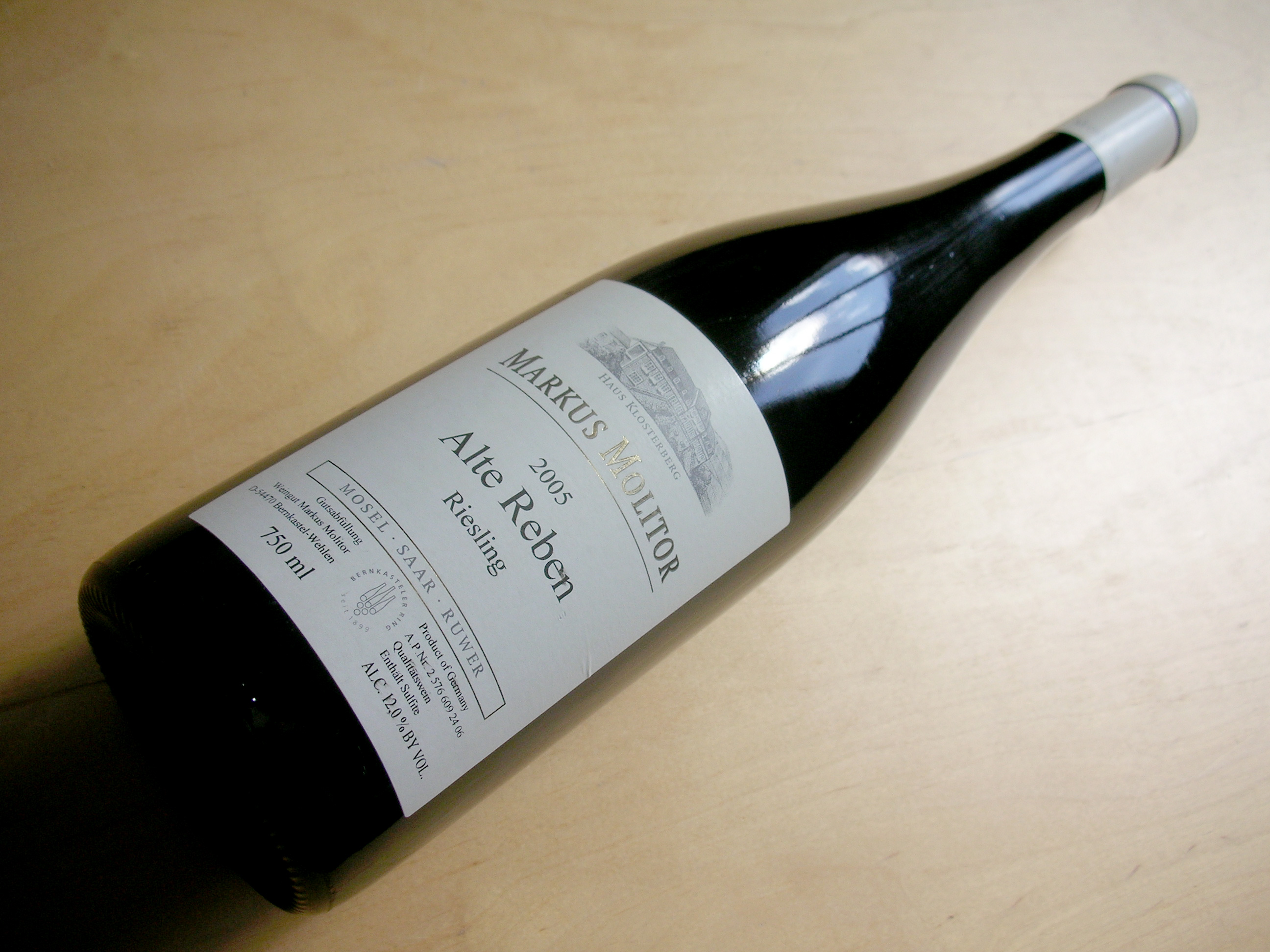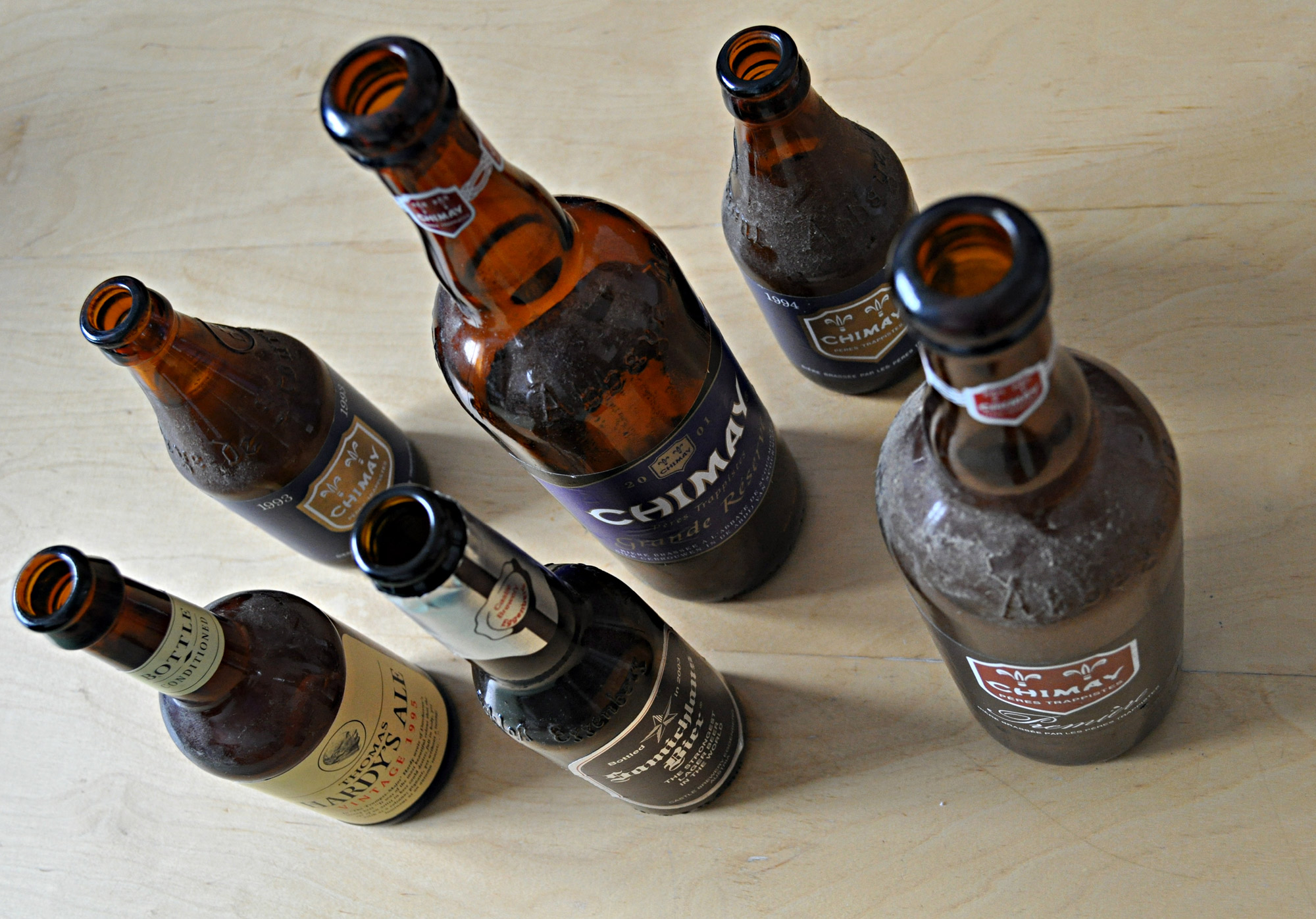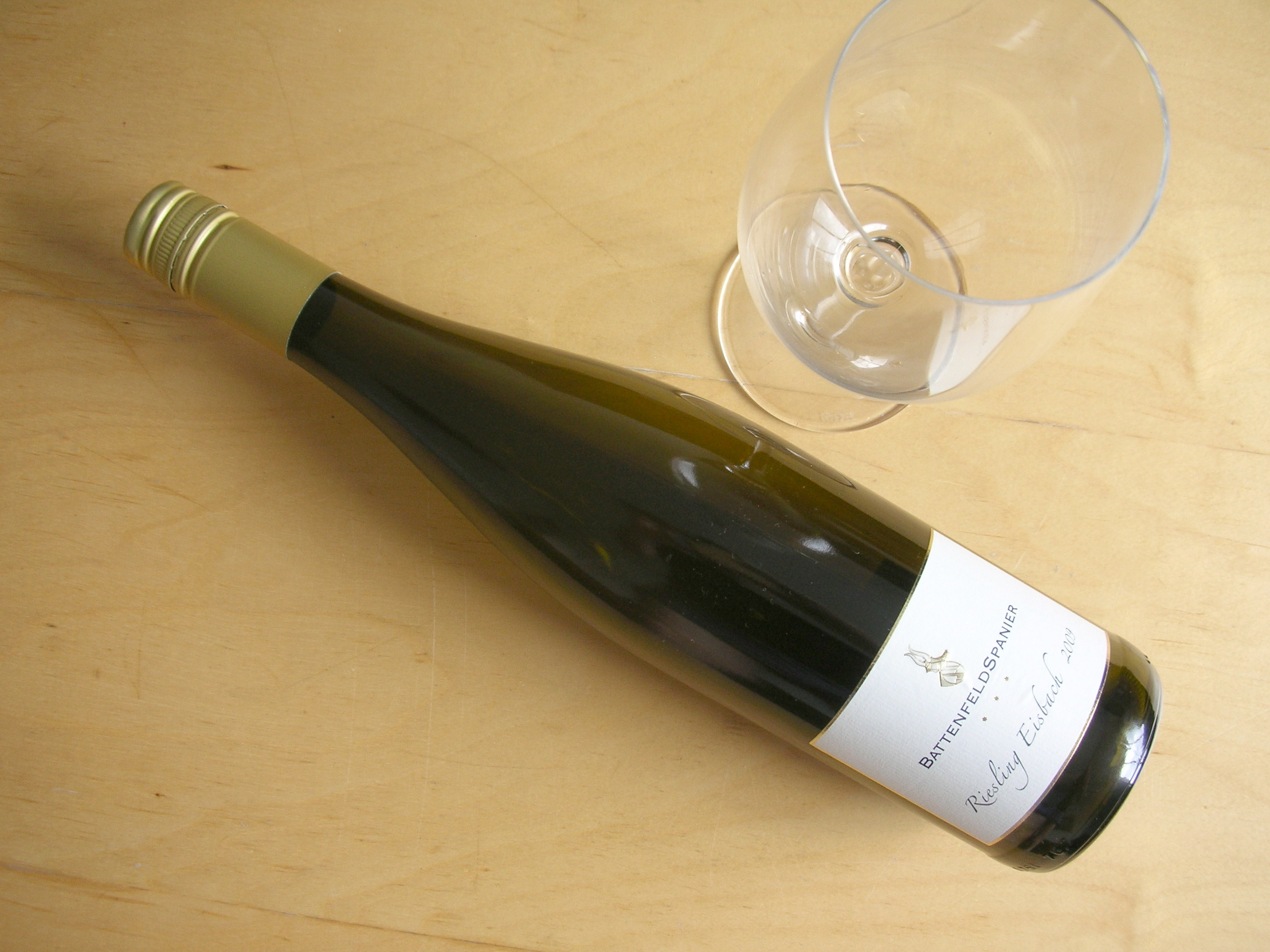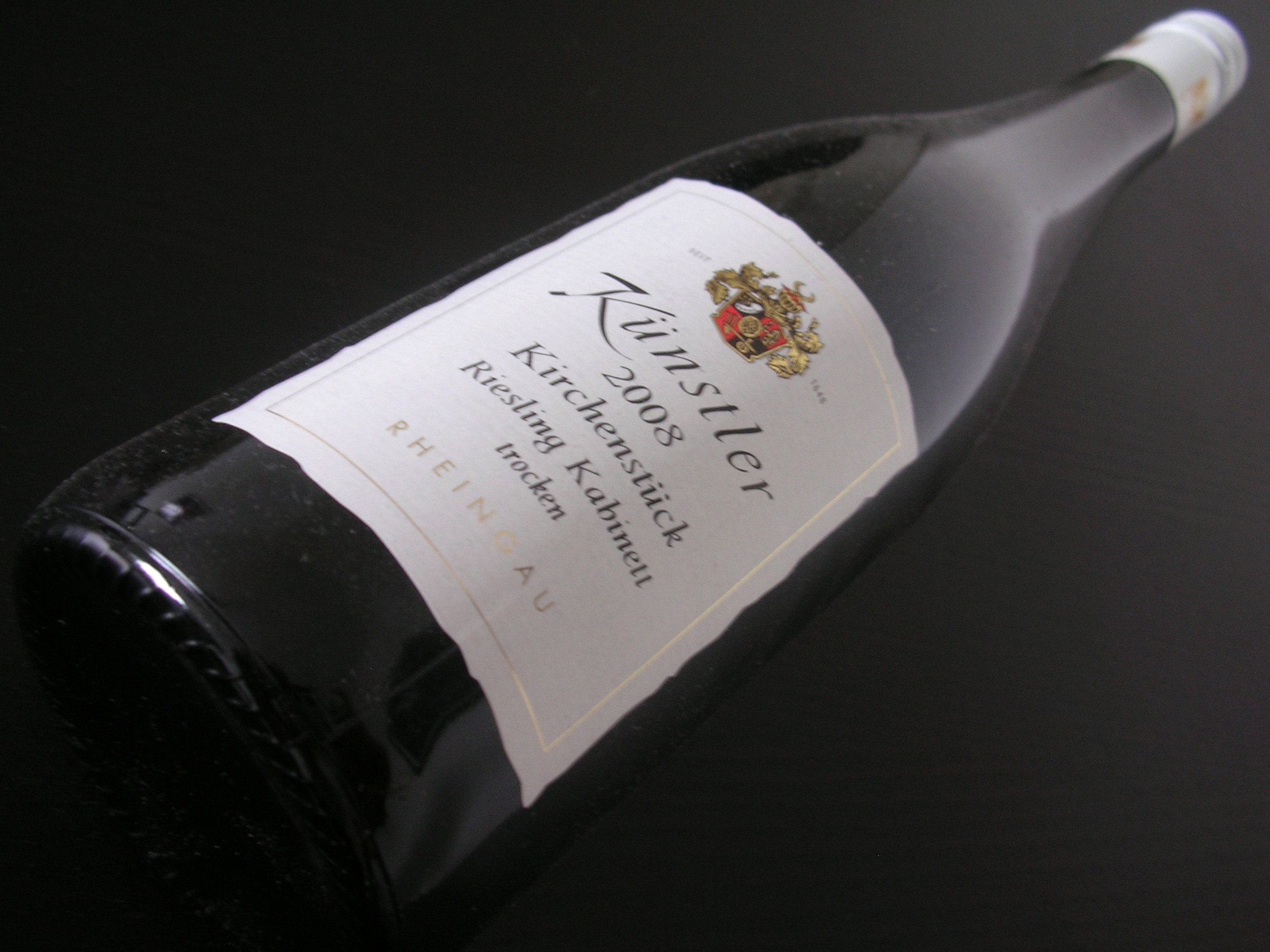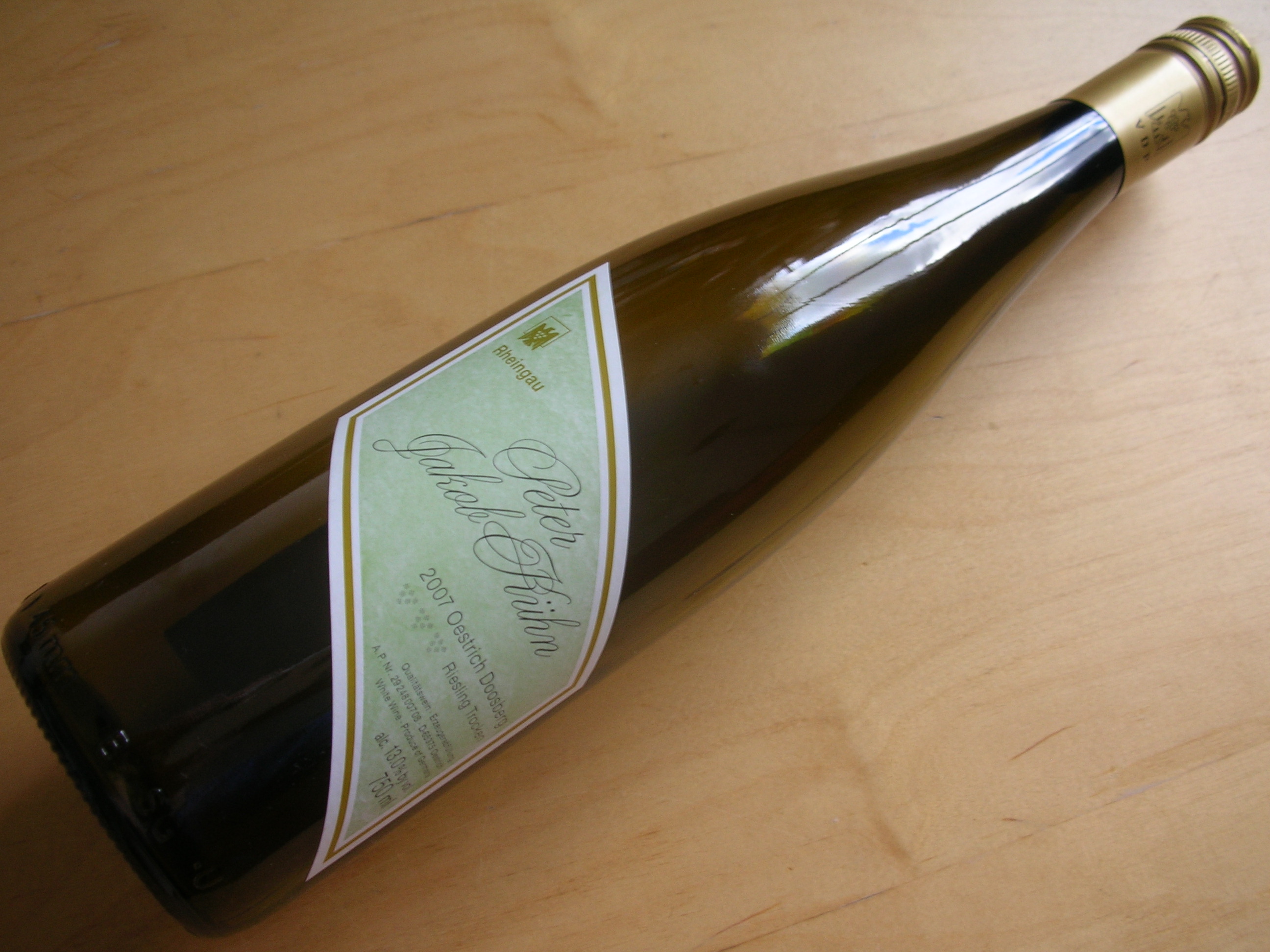Markus Molitor, Alte Reben, Riesling, 2005
Mosel Riesling, the embodiment of German wine - at least in foreign perception. Readers of the Wine Rambler will not have to be told that there is so much more to German wine than Mosel Riesling. Still, every so often reminding everyone of the fantastic wines that come out of this area cannot hurt. One of our favourite producers at the Mosel is Markus Molitor (who also makes fantastic Pinot Noir). And one of the best Molitor wines I have had is, no, it is not one of the prestigious Auslese or Trockenbeerenauslese wines, it is a 'Qualitätswein'. These quality wines are somewhere in the middle of the German classification system - but don't let these bureaucratic details fool you. You are looking at pure awesome, and at amazing value too.
